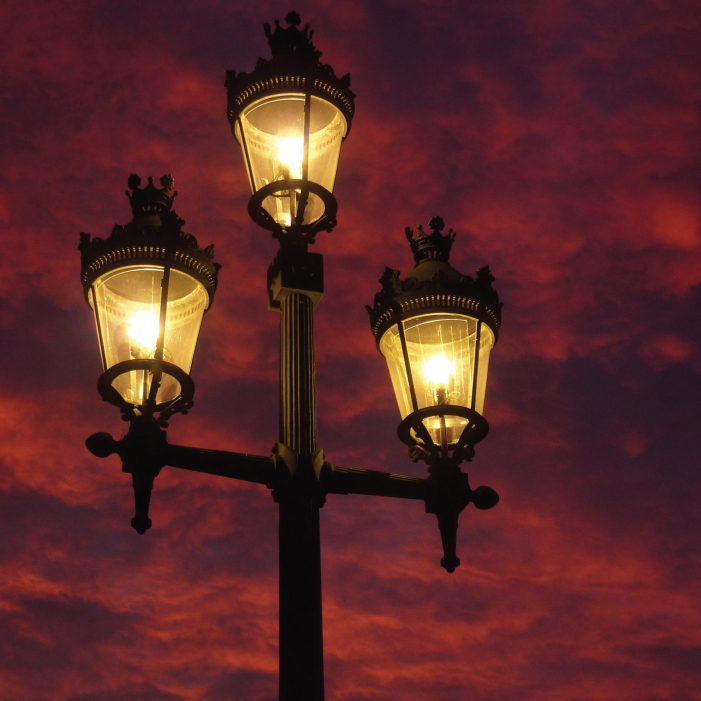Nocturnal Meanderings Through The City
With the cost of a night out at an
all-time high, Dr Bethany Usher
suggests the resurgence of a
historic British popular past time –
walking the city at night.
It is a warm midsummer evening and we have an unexpected
offer to babysit. A year ago, we may have hit a beer garden or
enjoyed a late supper in a favourite restaurant. But as we look
to ways to cut costs, I suggest something different - we walk
the city at night.
Nightwalking was a popular pastime and part of popular culture in Europe from the early modern period. From the first print
pamphlets, which described vagrants, sinful women and “beastly
begotten” homeless children in the 16th century, to true crime
documentaries and podcasts popular today, the sounds and sights
of the nocturnal city have fascinated journalists, authors and artists.
One of the earliest examples of the genre, a late 17th century
periodically published pamphlet written by moralist John Dunton,
launched within a year of London’s first streetlamps. The flickering
flames cast new shadows on the capital and helped reveal what
lurked in its darkest corners. In The Night-Walker: or Evening Rambles
in Search of Lewd Women, Dunton exposed the “sinfulness” of sex
workers and called for a range of punishments. But he was beset
by accusations that it provided a guide for sex tourists to fulfil their
depraved desires and in response, despite large sales, he ceased
publication.
Similar “moral maps of the metropolis” made their way into 19th
century penny dreadfuls, as well as Newgate novels such as Charles
Dickens’ Oliver Twist, and the works of modern crime journalists.
Across all, there were themes and visual spectacles, some of which
are still familiar today.
Many pamphlets and periodicals included detailed observations of
drunken pastimes of the working class, often portrayed as potential
criminals or a violent mob. They retold passing conversations with
law enforcement officials - first watchmen, then constables and
later police officers - about current risks and memorable incidents.
Sometimes the writer might converse with a fellow “gentlemen”
who was down on his luck from gambling, alcohol or both.
In a feature describing his passion for “Night-Walks” for the
magazine All Year Round in 1860, Dickens declared that it “was
always the case” that the city-at-night was “in imitation of
individual citizens belonging to it”, with its “expiring fits and starts
of restlessness”. His work was indicative of the form. The city was
ever changing with the time of day, but paradoxically the night was
eternal. There was temporal slippage with the past and a sense of
continuity with hundreds of other curious souls who had walked
the same streets in their own lifetimes.
Sometimes journalists turned these familiar narratives towards
social and political activism. In 1827, English emigrant William
Heighton launched the radical Philadelphia based Mechanics Free
Press where an anonymously written column by the “Night Hawk”
uncovered the “misdemeanours done under cover of the night” to
the poorest, and the depravity of the city’s supposedly respectable
propertied class.
Sixty or so years later in 1885, former editor of the Northern Echo
W.T. Stead published the Maiden Tribute of Babylon in the Pall Mall
Gazette. It opened with his observations of night-time London.
Repulsed by the widespread practice of rich men paying to rape
the children of the poor, he conjured images of gluttony, lechery
and depravity. His work was an overnight sensation, despite
condemnation from pockets of Westminster and the Prince of
Wales. Stead was jailed for buying a child without the permission
of her father in order to illustrate the shameful truth. But he
considered it a small price to pay for a successful campaign that led
directly to the introduction of the first legal age of consent.
More recently, there have emerged feminine versions of the
tradition. Laura Elkin’s Flaneuse – from the French term Flaneur or to
walk aimlessly – draws directly from Virginia Woolf’s Street Haunting
from 1930. Both are part memoir, part travel guide and part literary
and social criticism. The female nightwalker, as a modern creature
of the 20th century, represents greater female independence.
Woolf described how “we walk, or I do, to pay attention, to see the
streets, the buildings that surround us, to immerse ourselves in a
world that might otherwise slip by”.
But sadly, despite such greater freedom to roam, women’s safety
remains a concern. There are numerous news reports of attacks and
murders at night each month. Despite the desire to roam and the right
to do so, we weigh up risks that may not cross the minds of most men.
My husband and I discuss this as we meander the banks of the
River Wear on our unexpected date. I tell him of times I felt unsafe,
and he tells me he always crosses the road to the other side when
walking behind a woman, so she does feel safe.
Dr Bethany Usher is Senior Lecturer in Journalism at Newcastle University and is author the book Journalism and Celebrity. Her forthcoming Journalism and Crime includes discussions of nightwalking as news culture and is published in 2023. It was inspired by Nightwalking: A Nocturnal History of London by Matthew Beaumont.
Sign Up To Little Crack

